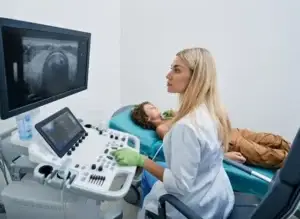 Alzheimer’s disease, the most common form of dementia, is a deleterious disease caused by plague in the brain that hinders memory and other essential mental functions. Dementia can lead to a loss of intellectual and social skills, which can interfere with day-to-day life.1 There are many treatment options available to temporarily manage symptoms, but the illness currently has no cure and has historically been challenging to detect in early stages. However, several new studies could potentially make this disease easier to predict in the future. Scientists from all over the world gather annually at the Alzheimer’s Association International Conference, of which the 2014 event was held in Copenhagen, Denmark. Recent studies shared at the conference have provided fresh insight into Alzheimer’s disease, leaving many medical professionals optimistic about potential new treatment options. Particularly, in the pharmaceuticals field, several new drugs trials are showing promising results. Furthermore, the discovery of a new protein could give pharmacy technicians a new target when creating drugs to fight Alzheimer’s disease.
Alzheimer’s disease, the most common form of dementia, is a deleterious disease caused by plague in the brain that hinders memory and other essential mental functions. Dementia can lead to a loss of intellectual and social skills, which can interfere with day-to-day life.1 There are many treatment options available to temporarily manage symptoms, but the illness currently has no cure and has historically been challenging to detect in early stages. However, several new studies could potentially make this disease easier to predict in the future. Scientists from all over the world gather annually at the Alzheimer’s Association International Conference, of which the 2014 event was held in Copenhagen, Denmark. Recent studies shared at the conference have provided fresh insight into Alzheimer’s disease, leaving many medical professionals optimistic about potential new treatment options. Particularly, in the pharmaceuticals field, several new drugs trials are showing promising results. Furthermore, the discovery of a new protein could give pharmacy technicians a new target when creating drugs to fight Alzheimer’s disease.
New methods for predicting Alzheimer’s
Alzheimer’s disease has traditionally been traced to plaques in the brain called amyloid and tau.2 However, a recent study has linked a new protein to dementia that could prove vital in predicting the disease. While studying the brains of patients that exhibited dementia symptoms at time of death, researchers noted that 98 percent had the newly linked protein.3 Amyloid plaque on the other hand is found often in the brain as people age, but does not necessarily ensure the onset of dementia. Overall, researchers found that patients with the newly-linked protein were 10 times more likely to exhibit signs of mental impairment at their time of death.4 Another recent study has resulted in a new method for potentially identifying Alzheimer’s disease 15 to 20 years before the it takes hold.5 Scientists performed trials in the form of a simple eye test to look at plaques in the brain. Amyloid plaques can be seen at the back of the eye, so medical professionals can identify the potential of the disease with a quick eye exam, whereas before more invasive procedures were required. Preliminary data in the study correlated levels of amyloids in the back of the eye with the amount found in the brain as a whole.6 If this method proves effective after more testing, it could provide a noninvasive and significantly less expensive way to gauge a patient’s chances of developing Alzheimer’s disease.
Drug trials
During the 2014 Alzheimer’s Association International Conference, scientists have reported five drug trials taking place that look to ameliorate symptoms of the disease in patients before they exhibit any cognitive decline.7 Participants in the trial all carry a specific gene that has been linked to a high risk of developing Alzheimer’s. Most of the drugs being tested target amyloids, as research linking new protein to Alzheimer’s is too recent to have encouraged pharmaceuticals. Scientists believe that a healthy lifestyle of diet and exercise, in combination with an effective drug treatment schedule, could potentially deter the development of Alzheimer’s disease.
Other findings
Preeclampsia, a pregnancy disorder that is a leading cause of newborn and mother mortality, has also been linked with the amyloids that scientists have connected with Alzheimer’s disease.8 This is estimated to be the cause of death for approximately 75,000 women each year globally.9 Researchers found that amyloids and beta-amyloids clogged the placenta of women who develop this condition. The scientists used a red dye that has also been used by researchers to identify amyloids in the brains of deceased Alzheimer’s patients. This dye was then used to detect amyloids in the urine of pregnant women. Initial testing has a high success rate of identifying preeclampsia.10 1“Alzheimer’s disease Definition” by Mayo Clinic Staff. Mayo Clinic. http://www.mayoclinic.org/diseases-conditions/alzheimers-disease/basics/definition/CON-20023871 2“New Brain Protein Tied to Alzheimer’s Disease” by Marilynn Marchione. ABC News. July 16, 2014. http://abcnews.go.com/Health/wireStory/brain-protein-tied-alzheimers-disease-24577824 3“New Brain Protein Tied to Alzheimer’s Disease” by Marilynn Marchione. ABC News. July 16, 2014. http://abcnews.go.com/Health/wireStory/brain-protein-tied-alzheimers-disease-24577824 4“New Brain Protein Tied to Alzheimer’s Disease” by Marilynn Marchione. ABC News. July 16, 2014. http://abcnews.go.com/Health/wireStory/brain-protein-tied-alzheimers-disease-24577824 5″Can An Eye Test Predict Alzheimer’s? Scientists Unveil New Vision Scans” by Melanie Haiken. Forbes. July 16, 2014. http://www.forbes.com/sites/melaniehaiken/2014/07/16/a-simple-vision-test-for-alzheimers-scientists-unveil-new-technologies/ 6“Can An Eye Test Predict Alzheimer’s? Scientists Unveil New Vision Scans” by Melanie Haiken. Forbes. July 16, 2014. http://www.forbes.com/sites/melaniehaiken/2014/07/16/a-simple-vision-test-for-alzheimers-scientists-unveil-new-technologies/ 7“5 Groundbreaking Trials Are Testing Ways to Prevent Alzheimer’s” by Alice Park. Time. July 16, 2014. http://time.com/2992603/5-groundbreaking-drugs-that-may-prevent-alzheimers/ 8“Protein misfolding, congophilia, oligomerization, and defective amyloid processing in preeclampsia” by Irina A. Buhimschi, Unzila A. Nayeri, Guomao Zhao, Lydia L. Shook, Anna Pensalfini, Edmund F. Funai, Ira M. Bernstein, Charles G. Glabe and Catalin S. Buhimschi. Science Translational Medicine. July 16, 2014. http://stm.sciencemag.org/content/6/245/245ra92 9“Pregnancy Disorder Linked to Alzheimer’s Disease Protein” by Jessica Berman. Voice of America. July 17, 2014. http://www.voanews.com/content/pregnancy-disorder-linked-to-alzheimer-disease-protein/1959857.html 10“Protein misfolding, congophilia, oligomerization, and defective amyloid processing in preeclampsia” by Irina A. Buhimschi, Unzila A. Nayeri, Guomao Zhao, Lydia L. Shook, Anna Pensalfini, Edmund F. Funai, Ira M. Bernstein, Charles G. Glabe and Catalin S. Buhimschi. Science Translational Medicine. July 16, 2014. http://stm.sciencemag.org/content/6/245/245ra92



